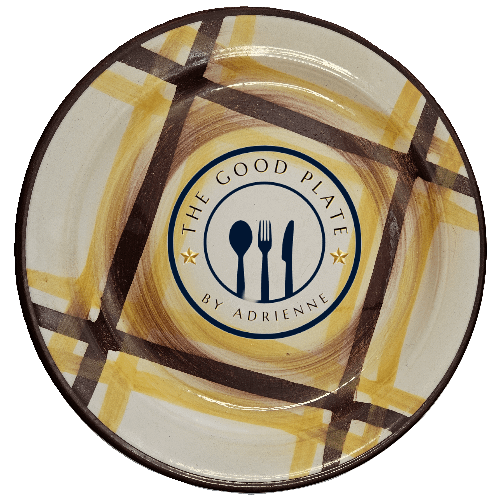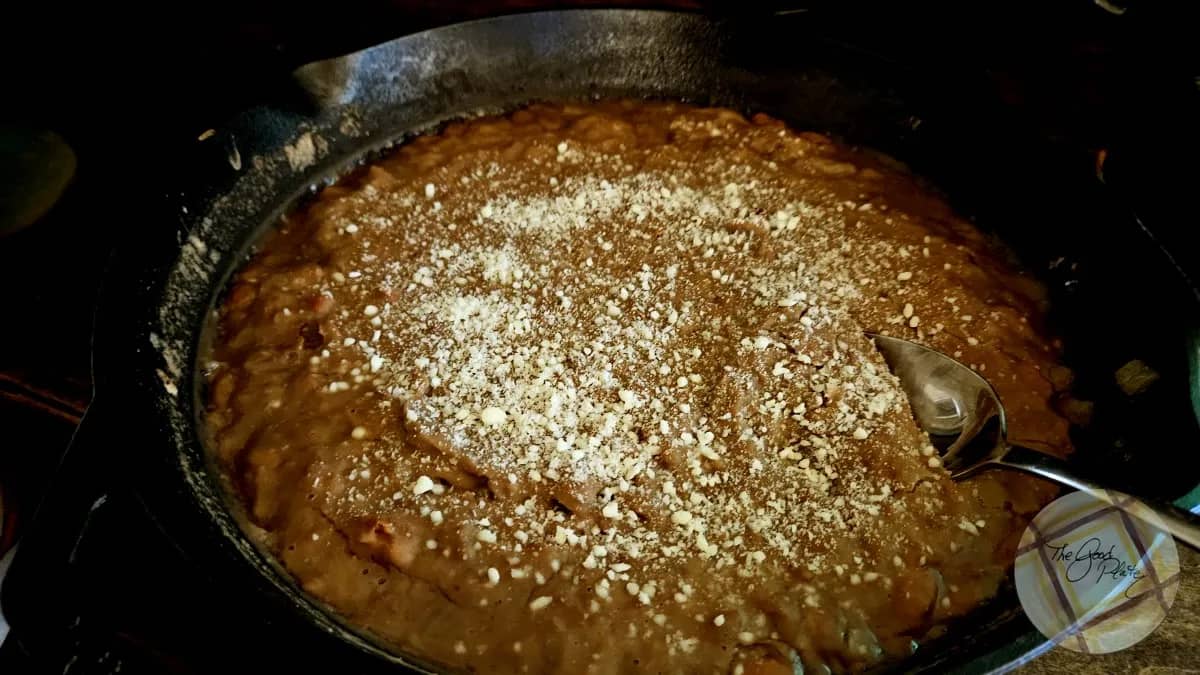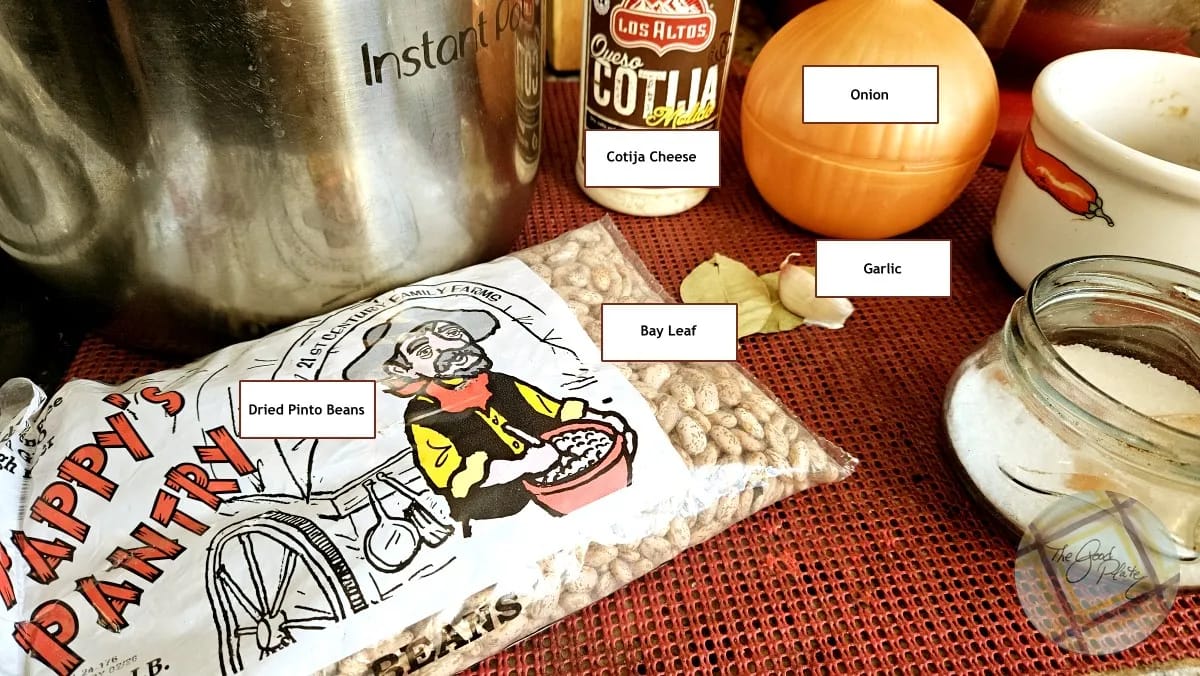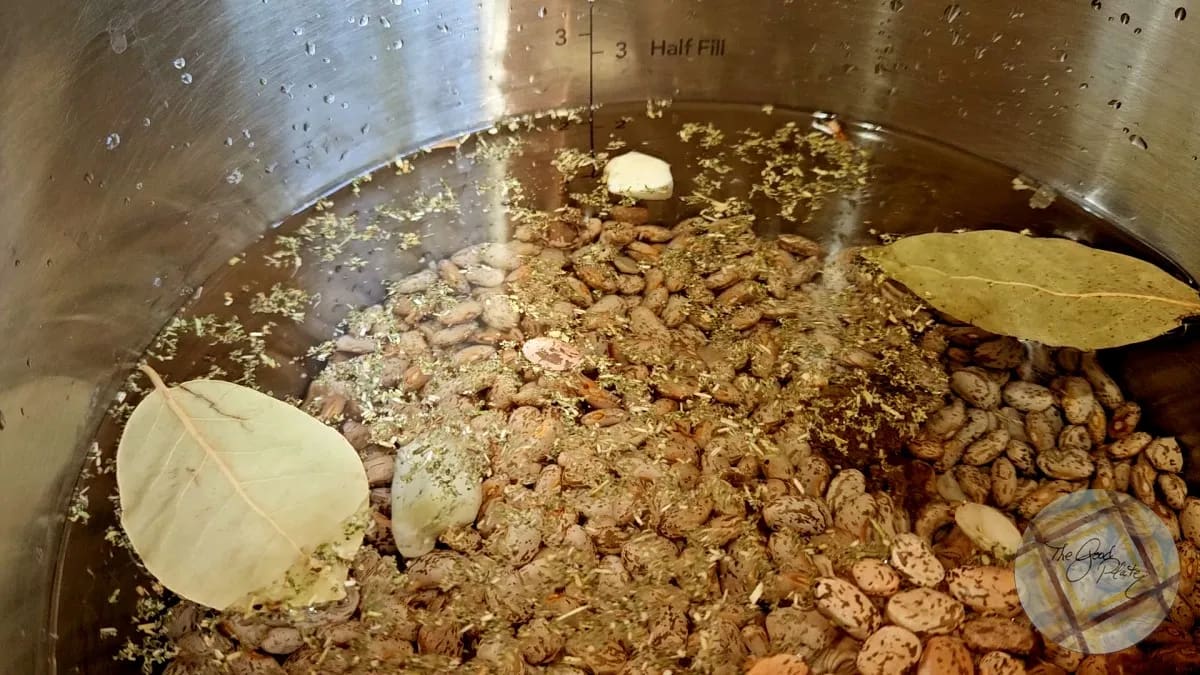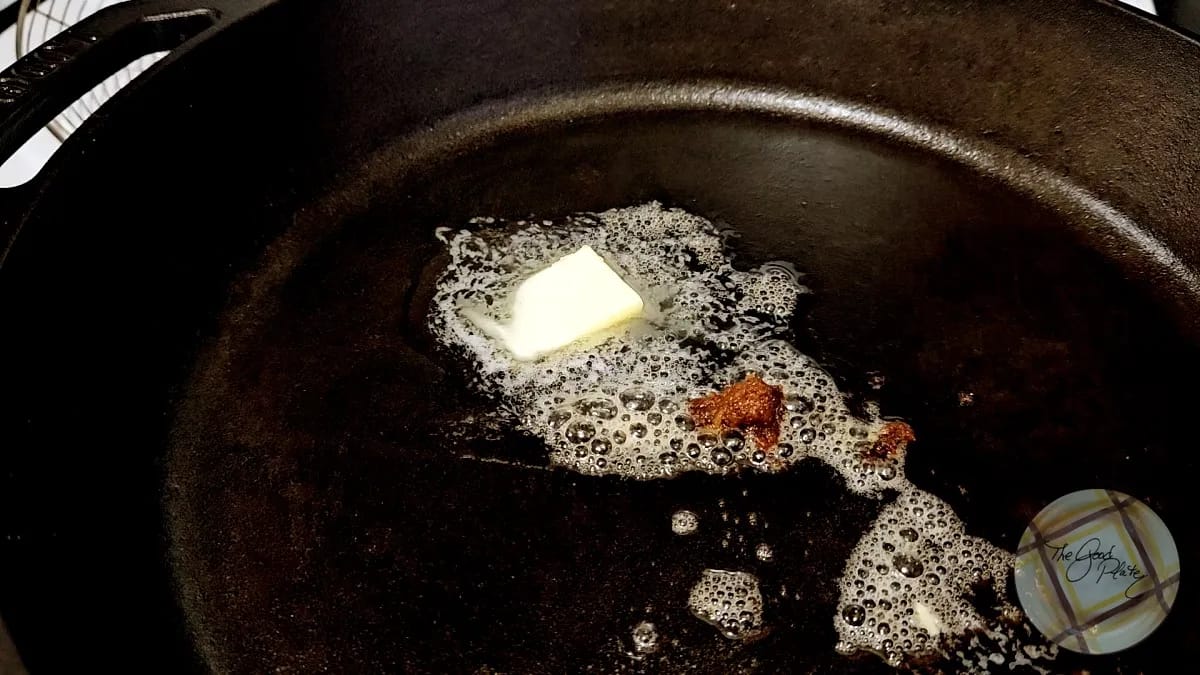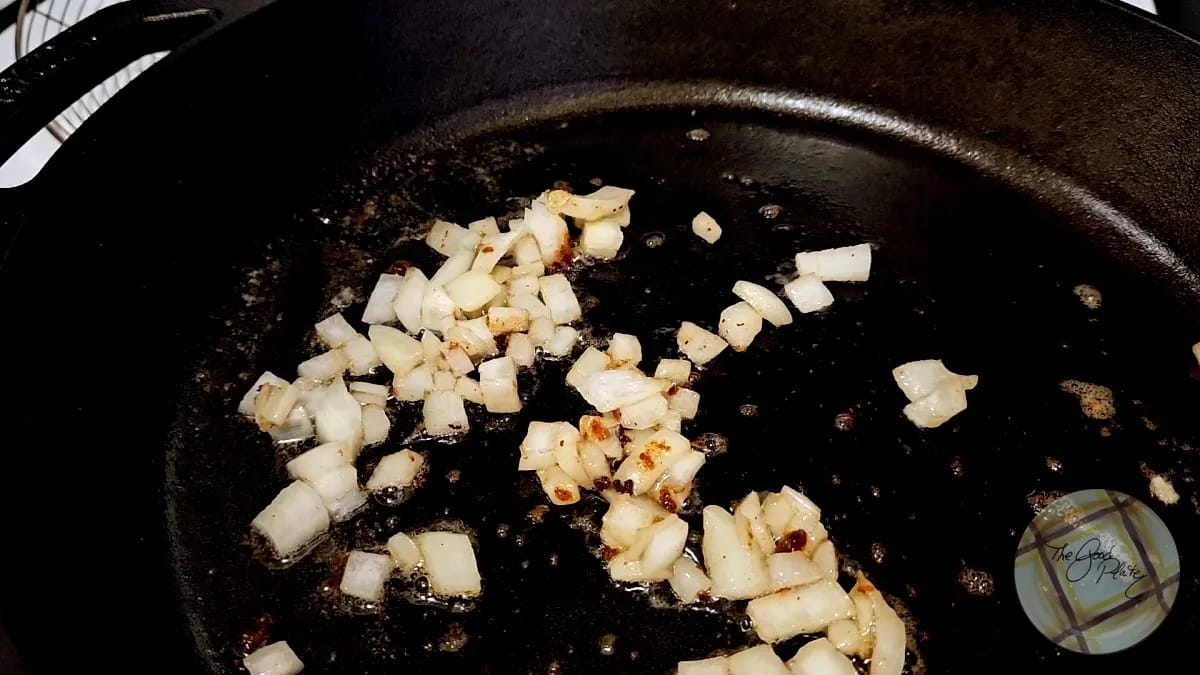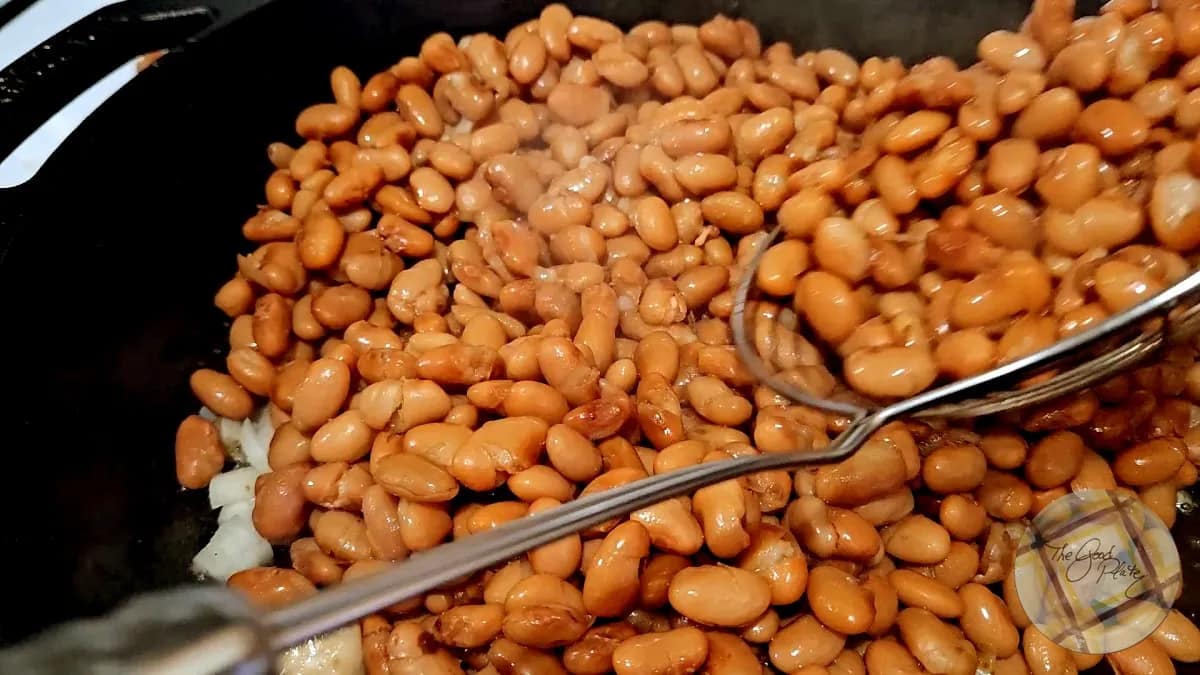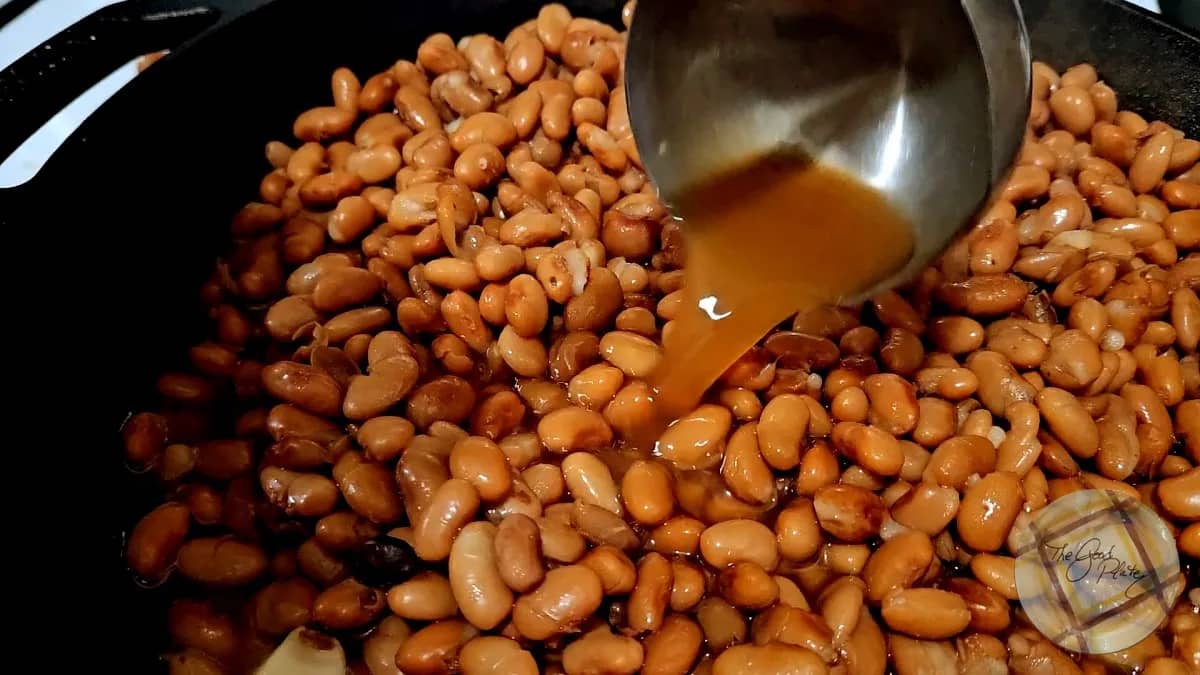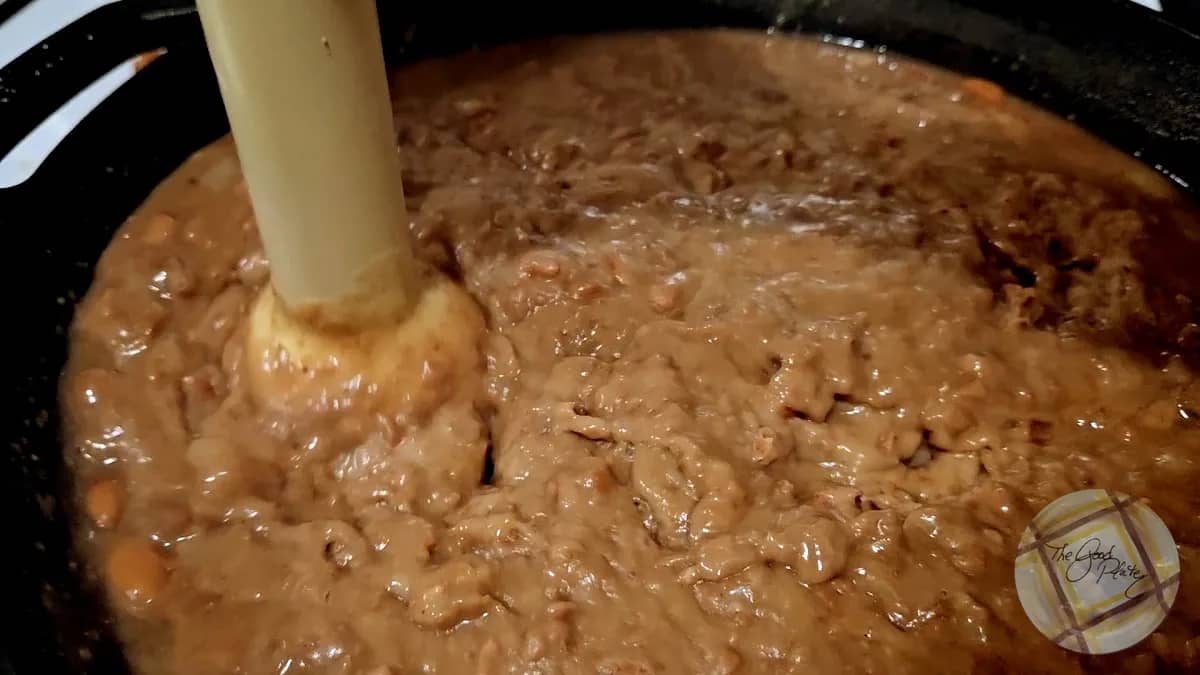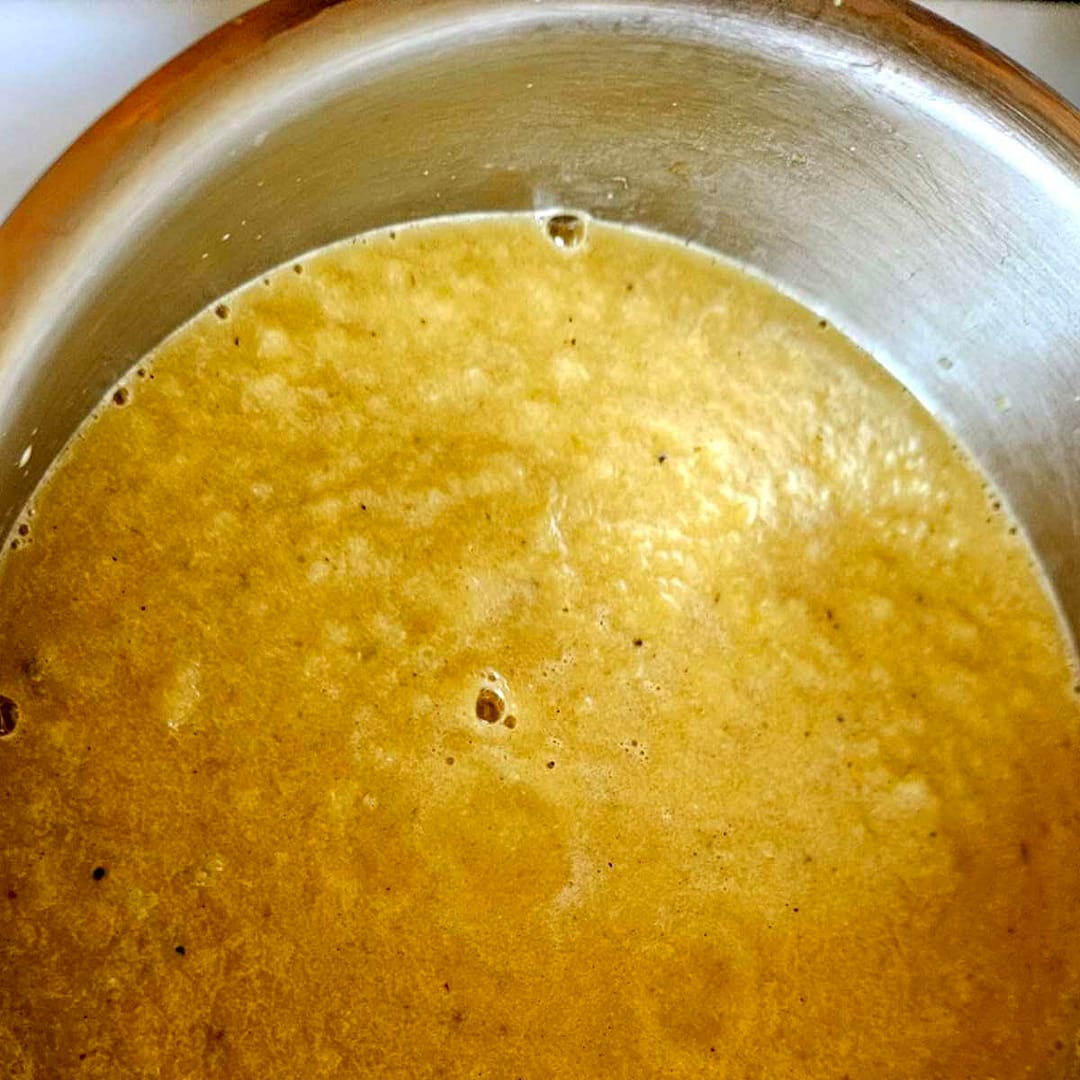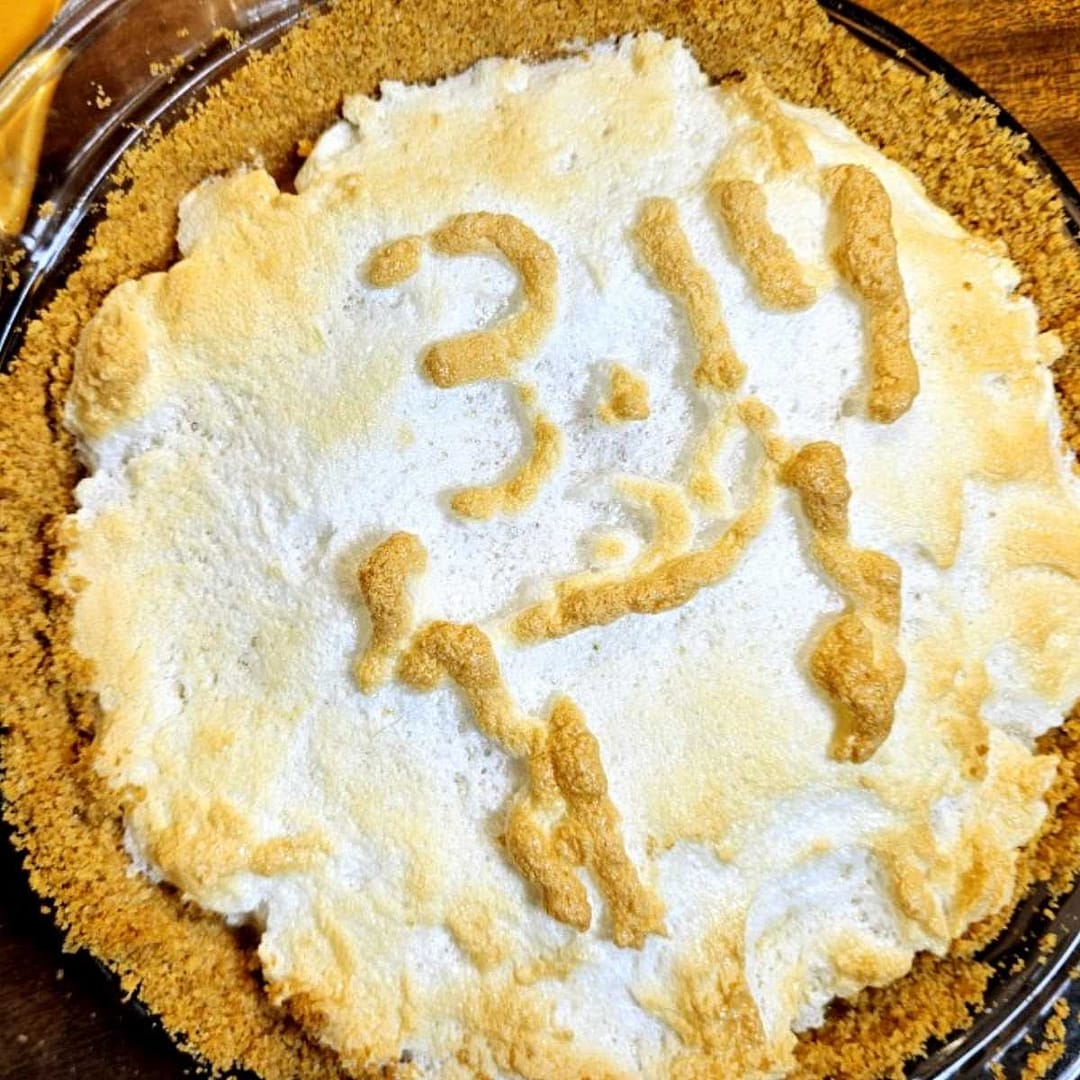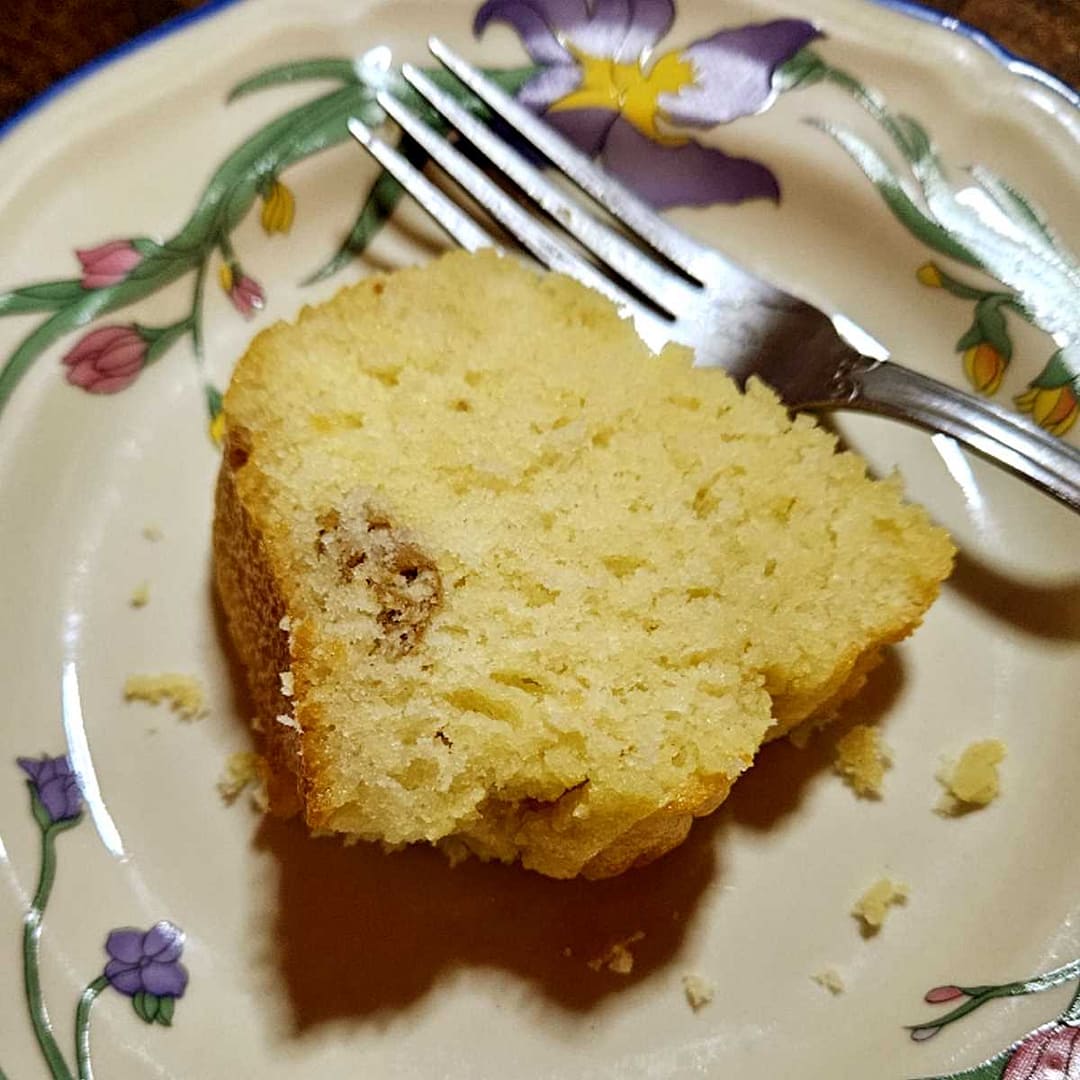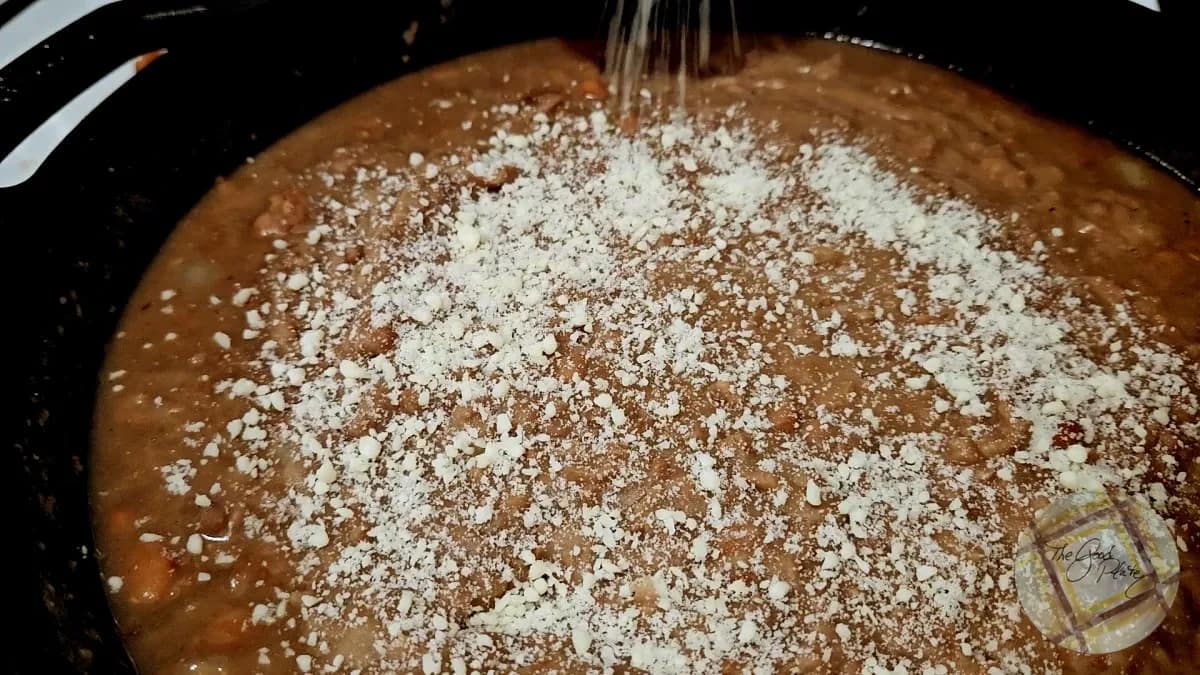
Refried beans, a staple in many Mexican and Tex-Mex dishes, are a delicious and nutritious way to enjoy the humble bean.
Despite the name, refried beans are not fried twice. The term “refried” comes from the Spanish word “refritos,” which means “well-cooked.” This cooking method involves simmering beans until they are soft and then mashing and cooking them further to achieve a creamy consistency.
The Instant Pot is a Game Changer
Using an *Instant Pot makes this process faster and easier, delivering perfectly cooked beans in under an hour. The beans do not need to be soaked beforehand. It is, as always, a good idea to sort through the beans to ensure there are no rocks or beans that went bad.
If you don’t have an Instant Pot, use the Passive Cooking Method. Put the beans in a pot with a lot of water. Bring the water to a boil, then cover the pot. Boil the beans for 2 minutes, then remove them from the heat. Let them sit, covered, for 2 hours, and then you can cook them from there.
The Secret to Flavoring Beans
There are many people who don’t like beans at home because they’re never as good as the ones at the taco stand or local Mexican restaurant. One of the reasons is that the beans were not flavored while they were cooking. Adding the Epazote herb adds flavor. Garlic, just broken up, is essential, as are bay leaves. However, what really takes homemade beans over the top is ham. You probably don’t have a ham bone lying around; use Better than Boullion’s Ham base.
Pot liquor is the liquid that is left in the pot after the beans have been cooked. Don’t throw it out! It has a lot of nutritional value and flavor. Use the pot liquor to thin the beans and make them creamier.
How to Make the Beans Creamy
Getting the cooked beans from the Instant Pot to the pan to “refry” them takes some finesse, and a *spider stainer is the way to go. If you don’t know what a spider stainer is, they are frequently used in Asian cuisine to remove foods from oil. They’re great for beans because you can drain them while leaving the precious pot liquor in the pot to use later.
To make the beans creamy, we use an *immersion blender. If you don’t already have one, I highly recommend getting one. You can use one for soups, sauces, and homemade mayonnaise.
Why Beans Are Important
History of Refried Beans
The history of beans dates back thousands of years. Various civilizations, including the ancient Egyptians, Greeks, and Romans, have cultivated and consumed them. In the Americas, beans have been a dietary staple for indigenous peoples for millennia. Refried beans, specifically, have their roots in Mexican cuisine. Traditional recipes call for slow-cooking beans with spices and lard, then mashing and frying them to create a creamy and flavorful dish. The Instant Pot has modernized this process, allowing quicker preparation while retaining the traditional taste and texture. In our recipe, lard is replaced with ham base.
Beans are a Powerhouse of Nutrition
They are an excellent source of protein, making them an ideal meat substitute for vegetarians and vegans. They are rich in dietary fiber, which aids in digestion and helps maintain a healthy gut. Beans also contain essential vitamins and minerals, including folate, iron, magnesium, and potassium. The high fiber content in beans helps regulate blood sugar levels and lowers cholesterol, contributing to heart health.
Beans Give You a Good Bang for Your Buck
Beans are not only nutritious but also highly economical. They are affordable and can be bought in bulk, making them a cost-effective option for feeding large families or meal prepping. Their long shelf life means they can be stored for extended periods without spoiling, reducing food waste. Additionally, beans are versatile and can be used in a variety of dishes, from soups and stews to salads and side dishes, making them a valuable addition to any pantry.
Beans Help Other Plants Grow
Beans belong to the legume family, which includes a wide range of species, such as black beans, pinto beans, kidney beans, and chickpeas. These plants are known for their ability to fix nitrogen in the soil, which improves soil fertility and reduces the need for chemical fertilizers. This makes beans an environmentally friendly crop that supports sustainable agriculture. Bean plants typically grow as annuals, completing their life cycle in one growing season, and can thrive in various climates and soil types.
Refried Beans Instant Pot Recipe
Email Me the Recipe
Refried Beans Instant Pot Recipe
If you purchase any of the products through these affiliate links, I get a few pennies that help keep The Good Plate open. I use these products myself and want you to be able to easily find them.
Ingredients
~~ For the Pot ~~
~~ For the Beans ~~
- ½ Onion ; chopped
- ½ teaspoon *Ham base
- 1 tablespoon butter
- 1 cup pot liquor, liquid left after beans are cooked
- ¼ cup Cotija Cheese
Instructions
- Mise en place
- 1 pound pinto beans ; sorted, 1/2 teaspoon Ham base, 1 clove Garlic, 1 Bay leaf, 1/2 teaspoon EpazotePut the beans, ham base, garlic, Epazote, and bay leaf in the cookwell of the Instant Pot.
- 2 quarts waterCover with enough water to the fill line, about 2 quarts. Cook under pressure for 50 minutes then naturally release.
- 1 tablespoon butter, 1/2 teaspoon Ham baseMelt the butter with the ham base in a cast iron skillet,
- 1/2 Onion ; choppedSaute the onion until translucent.
- 1 cup pot liquorUse a spider to add drained beans to the pot.
- Add some of the liquid the beans were cooked in (pot liquor).
- Use an immersion blender to mash the beans.
- 1/4 cup Cotija CheeseWhen all the beans are creamy, top with cheese.
- Enjoy!
Video
Nutrition
Refried Beans Instant Pot Recipe Video Transcript
Transcript
Good afternoon, and welcome to the Good
Plate’s Kitchen.
This afternoon, we are
making… frijoles refritos.
Otherwise known in the United States as
refried beans.
Now, people think that refried beans are
at our fried and they’re not.
Refritos actually means well cooked.
It means they’ve been cooked for a long
time.
Now, notice these are…
just regular dried beans.
And because of the
magic of the Instant Pot,
these are going to be
ready and under an hour.
And I’m not soaking these.
They’re just going straight into the pot.
So, let’s do that.
This is a pound of
beans that I have sorted
through to make sure
there’s no rocks in there.
That’s a good thing to do.
Okay, I’m just going to stick these
directly in there to the pot.
Okay, now I have filled that pot.
with the beans and three quarts of water.
Because beans need a lot of water because
they are going to rehydrate.
And the Instant Pot is going to help them
do that.
To give them flavor, I’m going to put some
Better than Bullion ham base.
This is going to
give it some of that
wonderful pork flavor
that makes really good.
..
refried beans taste so good.
Lard is actually often used.
Now, this is kind of salty, so I won’t
have to use.
I won’t have to add salt either.
And into that…
I’m also going to put some Penzey’s
epazote.
I hope I’m pronouncing that right if I’m
not.
Let me know in the comments if I’m not.
Okay, and we’re going to put… about a
teaspoon of that.
If you can’t find epazote, you can use
oregano.
Okay, but epazote is better.
Okay, and then we have…
and then we have a garlic clove that I’m
just going to break up.
It’s just for flavor.
And it will be pulled out later.
And also I’m adding to that two bay
leaves.
And those were also be pulled out and it’s
time to actually need the beans.
Which is going to happen in about an hour.
And we’re back.
The beans are done.
Okay, first I’m going to… saute off an
onion.
And I’m going to put a little tiny bit of
that ham flavoring in here also.
I’m going to put a little tiny bit of that
in there too.
Just for some extra flavor.
Let the butter get all melted.
This is a large cast iron skillet.
I highly recommend them.
There will be a link in the description.
And here is some chopped onion that I
already chopped.
And I’m just going to wait until that gets
translucent.
Break up those onions.
Okay, that’s good.
They’ve gotten soft enough.
This is a spider.
See how it even looks like a spider.
And it’s very good at strain things.
Especially beans.
Now I’m just going to get the spider.
And now I’m going to take some of the pot
liquor.
That’s the liquid that’s left in the pot
after the beans are made.
And I’m going to add that to these beans.
You can see it’s kind of still boiling.
Alright, now this is the fun part.
This is a hand blender.
This – mine is relatively old.
They have newer ones that are better.
But this one is just fine.
You can see how creamy it’s getting.
And you can see, as I do this,
that it’s thickening up.
And I still have the flame under it.
So it’s still boiling.
That makes it nice and thick.
And that’s exactly the way we want it.
Okay, now we have some beautiful Mexican
cheese.
And I’m going to sprinkle on.
I’m going to turn the heat off.
And sprinkle this on.
And there’s the cheese.
And that is ready to go.
Thanks for watching.
We hope you’ll try this soon.
Details and instructions and ingredient
amounts are on the website.
We left a link in the description.
See you next time on The Good Plate.
Bye bye for now.
References
- Harvard T.H. Chan School of Public Health. (n.d.). The Nutrition Source: Beans and Legumes. Retrieved from https://www.hsph.harvard.edu/nutritionsource/beans-legumes/
- United States Department of Agriculture (USDA). (n.d.). Economic Research Service: Pulses. Retrieved from https://www.ers.usda.gov/topics/crops/pulses/
- National Center for Biotechnology Information (NCBI). (2010). Nutritional and Health Benefits of Dry Beans and Pulses. Retrieved from https://www.ncbi.nlm.nih.gov/pmc/articles/PMC3191946/
